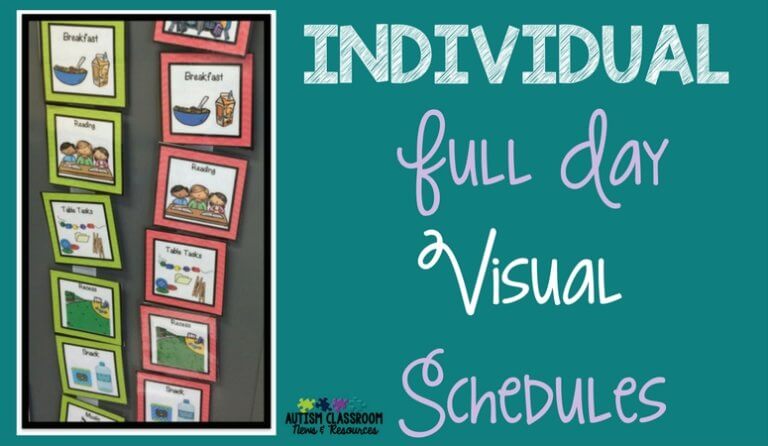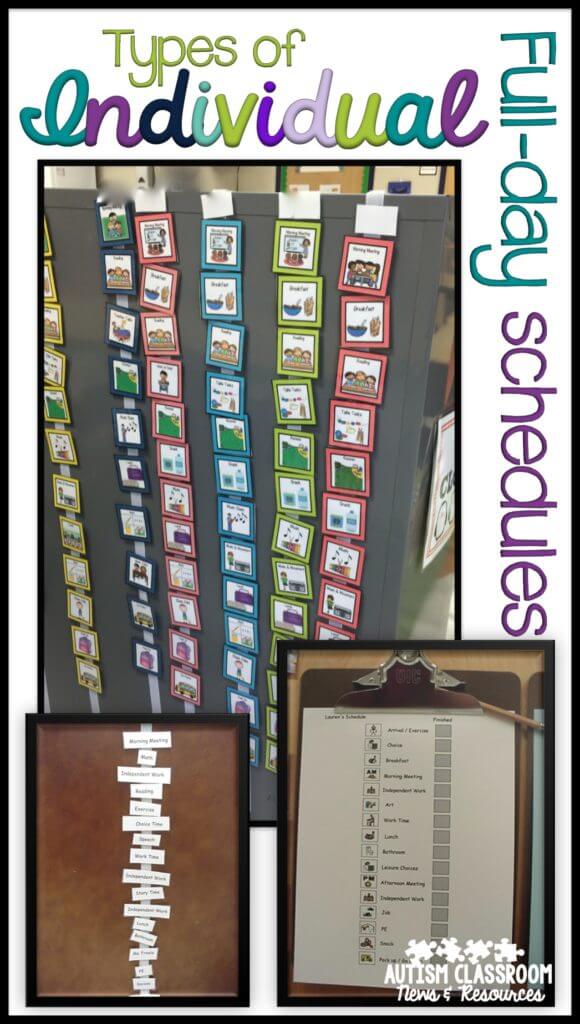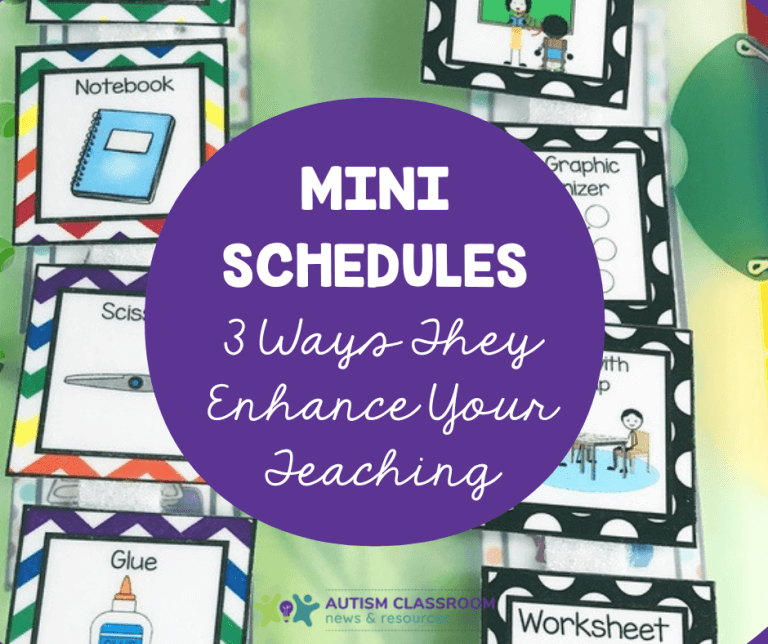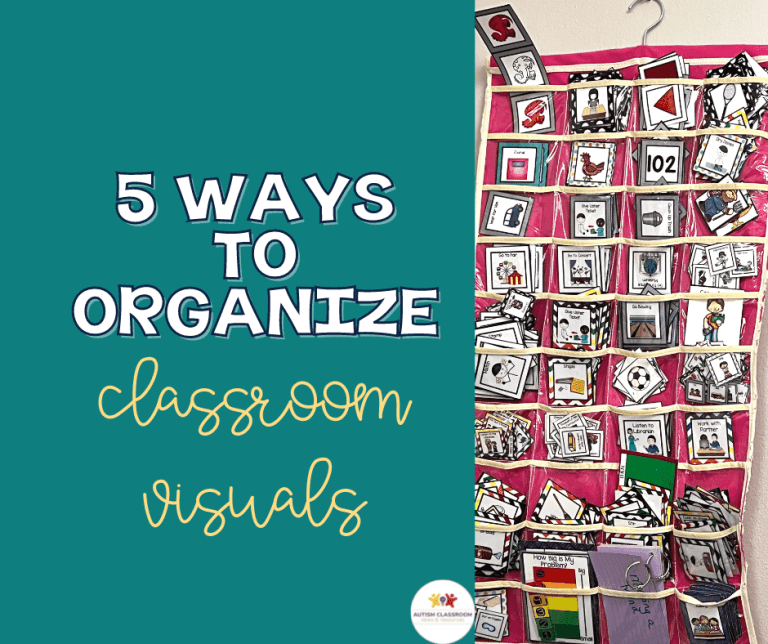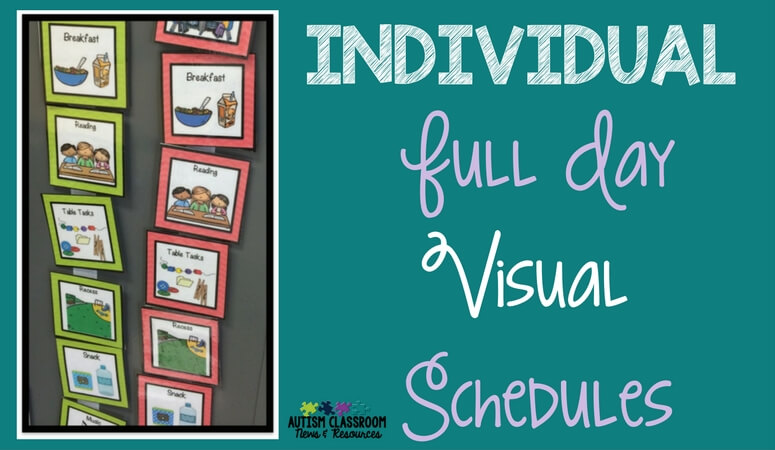
The most common type of visual schedules for students with autism are full-day individual visual schedules. As I discussed in a previous post, there are many types of schedules and schedules can be used for many different purposes for children with developmental disabilities. Last week I talked specifically about the basic form of first-then schedules. Today I will focus on full day schedules that can take several forms for special education teachers.
What is an Individual Full-Day Schedule?
When people talk about the use of weekly schedules, many times this is the type of daily routine schedule they are referring to. An individual schedule is used just for that one person and is typically individualized to meet his or her needs. This includes weekly activities on a daily picture schedule.
A full-day schedule represents each specific activity during all or part of an individual’s day. So for instance, you might have a schedule that presents all the specific activities of the school day for a student. Or you might have a schedule representing the child’s day activities at camp or all the activities for a Saturday morning at home.
I’ll focus on how the schedule is represented (e.g., picture, object, written) in a different post. But typically there is a word or picture for each of the day’s events and the individual either takes the visual to check in to an activity or checks off the activity when it’s finished. You can station the schedule on the wall or make it portable, like the ones on the clipboard.
Individual Full-Day Visual Schedule Areas
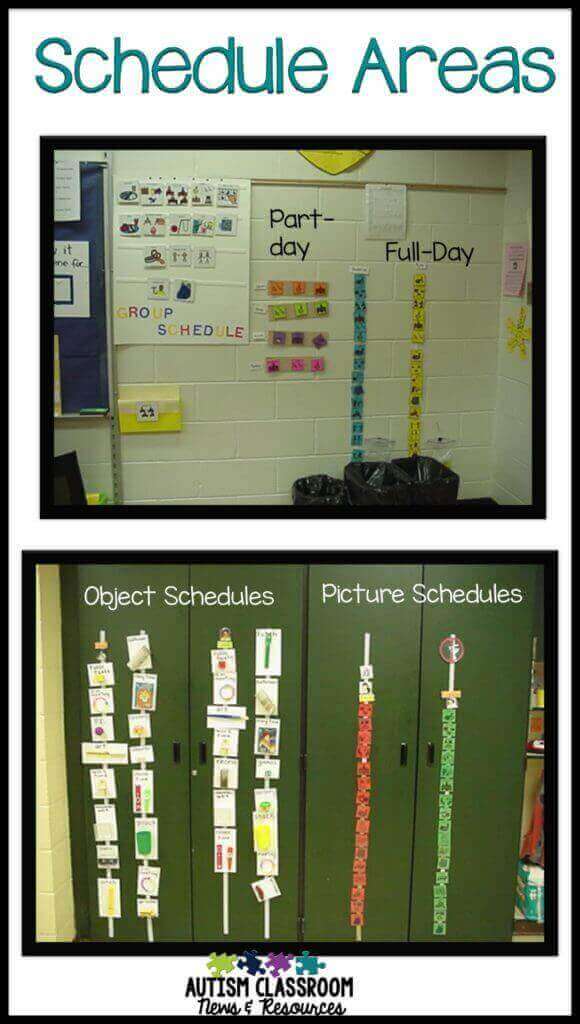
Both of the pictures to the left are examples of visual scheduling areas. In the top picture, you can see the group schedule for the class as well as full day individual detailed schedules on the right. In between are center schedules for students who followed the group schedule for activities that were the same across the group (e.g., lunch, morning meeting). They just needed a center schedule for the times when individual students were doing individual things.
In the bottom picture, you can see individual schedules for a class. Many of the students were using object schedules and some were able to use individual picture-icon schedules. This was a class of very complex learners, many of whom were using augmentative communication and assistive technology for everyday skills. The object schedules made the representation of the activity more concrete for them. It included materials they found in that activity (e.g., computer keys from a keyboard for computer time).
You will also notice in both pictures that the majority of the students are using schedules that go from top to bottom, while the center schedules are horizontal. Developmentally students master top to bottom scanning earlier than left to right. So for students who are just learning schedules or have limited independence, we typically start with top-to-bottom orientations.
Individualizing Full-Day Visual Schedules
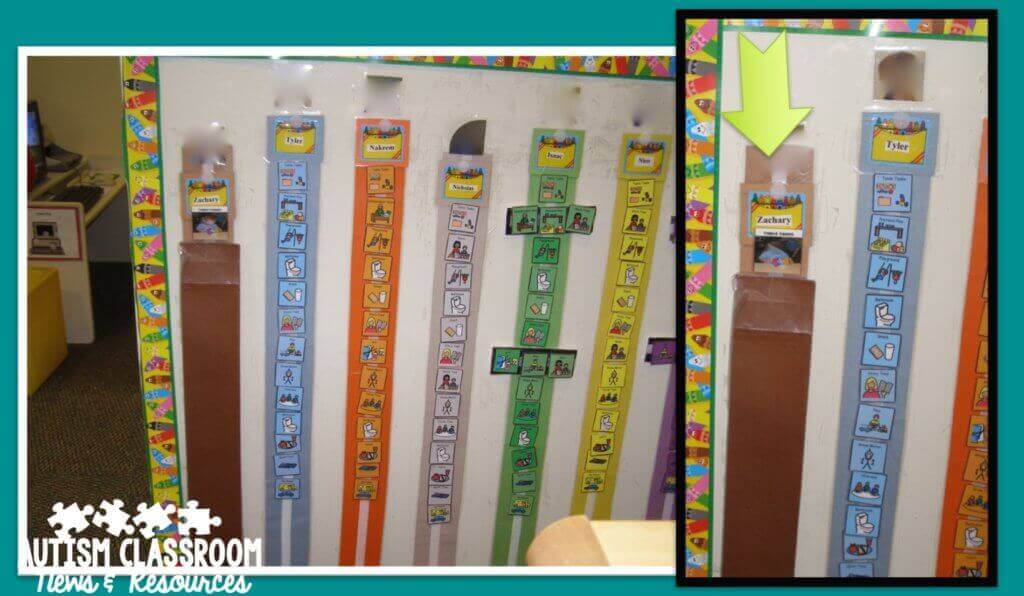
I included this picture because it shows a group of individual schedules for a classroom. Some children were using just typical top-to-bottom schedules. Some had center schedules that crossed the schedule horizontally. The schedule on the right, that I enlarged, is for a student who couldn’t follow a full-day schedule. He needed just one visual at a time. He was using a photo schedule. The teacher created a cover for the schedule so that only the next activity was visible when he checked it.
I’ve done something similar on a notebook as well. For some students, too much information is overwhelming and difficult to interpret. This is a great way to break down the presentation of the schedule while still getting him used to going to the schedule, getting the visual, and taking it to a check-in board or envelope with a matching visual.
Resources for Individual Visual Schedules
So that gives you a taste of the way the child’s visual schedules can be used and the variety of activity schedules. In the next post I will show you some individual schedules of different types. I will also address why certain characteristics seem to work for certain students. In the meantime, check out my visual schedule bundles for all ages on TPT if you are interested in the schedules that you have seen in some of the pictures.
Check Out Visual Tools and Supports for All Ages in the Store
Then, hop over to the next post in this series to see more examples of visual schedules for autistic children.

